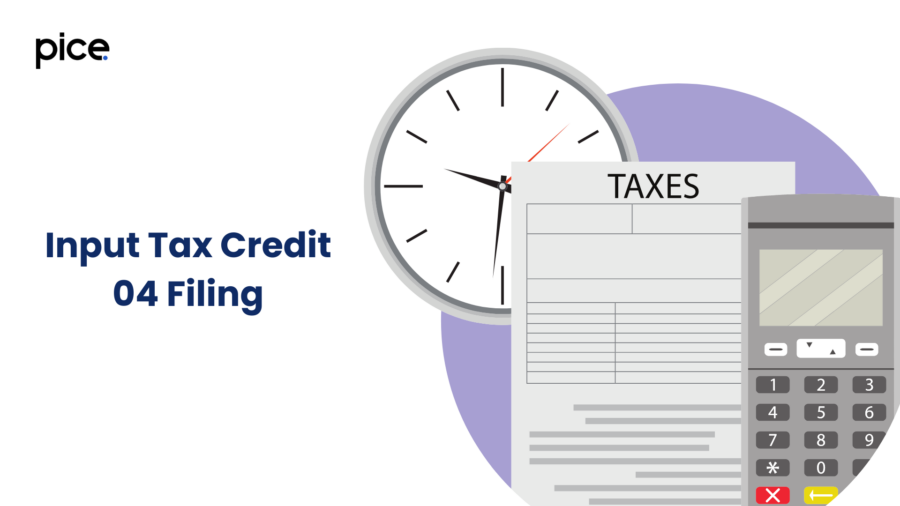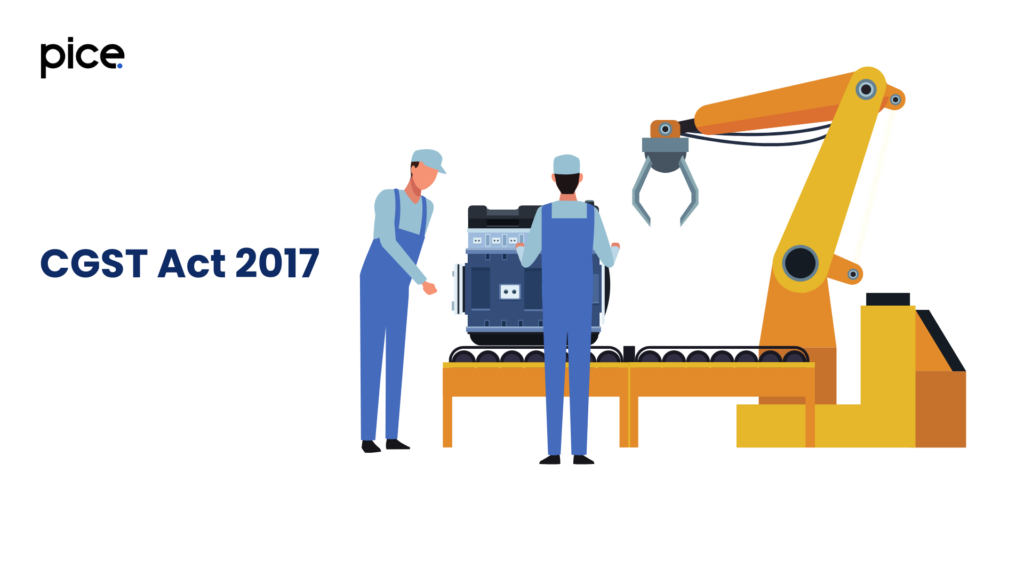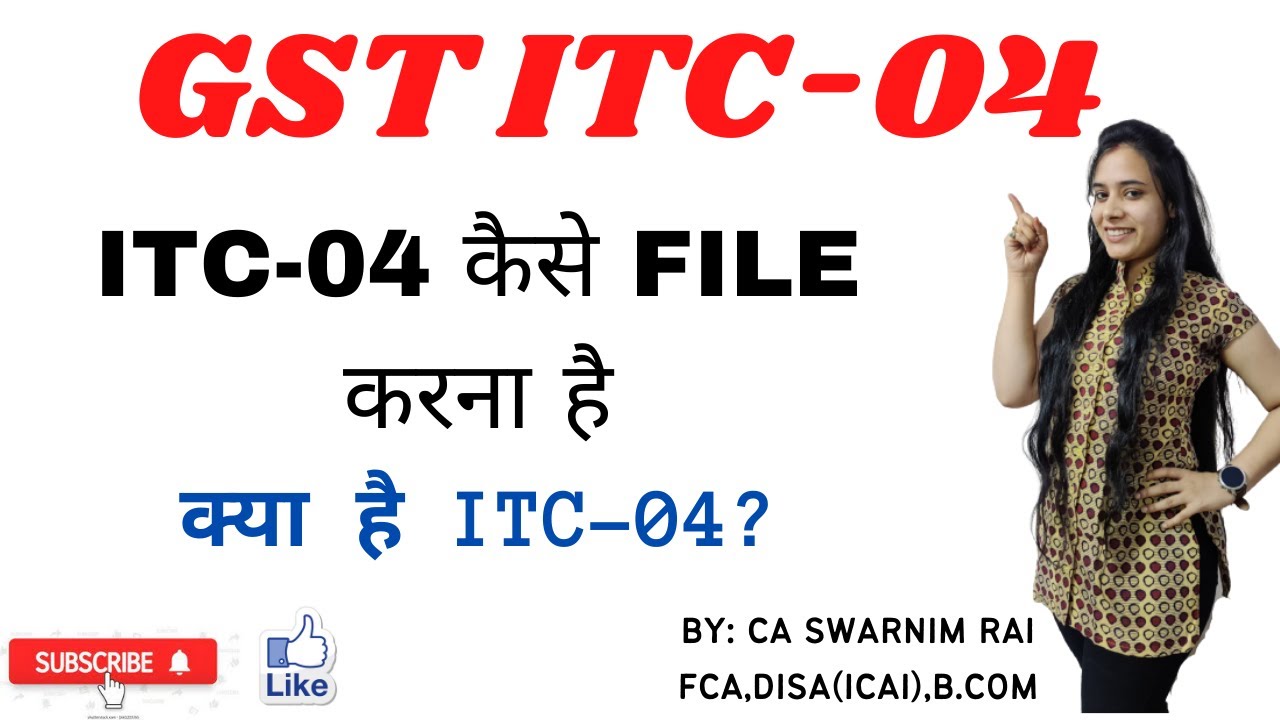A Comprehensive Guide on Input Tax Credit 04 Filing
- 28 Aug 24
- 9 mins

A Comprehensive Guide on Input Tax Credit 04 Filing
Key Takeaways
- Job work involves the principal manufacturer sending goods to another registered person for further processing, defined under Section 2(68) of the CGST Act 2017.
- Principal manufacturers can claim input tax credit on goods sent for job work, provided they meet specific time limits for receiving the goods back.
- MSMEs with an annual turnover up to ₹5 crore file ITC-04 annually, while those exceeding ₹5 crore file it half-yearly.
- Non-compliance with ITC-04 filing can result in penalties up to ₹25,000 under Section 125 of the GST Act.
- Timely filing ensures GST compliance, enables claiming input tax credits, and improves supply chain efficiency for MSMEs.
The GST ITC-04 form is crucial for Micro, Small and Medium Enterprises (MSMEs), prioritising job work. This blog elaborates on what is job work, claiming input tax credit on job work, its time limit and consequences for delays. Further, learn about the steps to file the ITC-04 form to experience a hassle-free filing journey.
Understanding Job Work

The Section 2(68) of the Central Goods and Service Tax or CGST Act 2017 defines job work as undertaking treatment or process by a person for goods belonging to another registered person.
In other words, job work is a process wherein the principal manufacturer sends raw materials, inputs or semi-finished goods to a worker to process them further. For instance, a large shoe manufacturer sends inputs like half-made shoes to smaller manufacturers to attach the soles and complete the product. This process is known as job work.
Claiming Input Tax Credit on Job Work
The principal manufacturer can take credit for tax paid on purchased goods sent to smaller manufacturers as job work. However, there are certain specifications pertaining to time limit, direct sales and machinery. The specifications are discussed below.
Time Limit for Receiving Goods Back by Principal Manufacturer
The principal manufacturer needs to receive back goods within the following time limit:
- Capital goods: 3 years from the effective date
- Input Goods: 1 year from the effective date
Notably, the effective date refers to the date on which the principal manufacturer sends goods to the job worker and the date when the job worker receives the goods. Further, the rule does not apply to moulds, dies, jigs and fixtures that the manufacturer sends to the job worker.
Consequences of Not Receiving Goods Within The Specified Time
There can be instances when the job worker does not receive goods within the specified time limit. In such a case, the goods will be treated as supply from the effective date. The principal manufacturer further has to pay taxes on the supply and the challan will be treated as a supply invoice.
Direct Sales from Job Worker's Location by Principal
The principal manufacturer can directly sell from the job worker’s location if the principal manufacturer declares the job worker’s place as an additional place of business. However, the rule does not apply in the following conditions:
- If the job worker is registered
- When the principal manufacturer supplies goods, specifically mentioned by the Commissioner and allows for direct sales from the premises of job worker’s business
Machinery Sent to Job Worker for Job Work
The time limit rule to send goods does not apply to machinery such as fixtures or tools, jigs, moulds and dies that the principal manufacturer sends to the job worker to proceed with the job work.
Form ITC-04 Overview
The Form ITC-04 is often referred to as the 'goods sent to job work and received back' form. This is a form used by MSMEs to file returns periodically. The form includes information about goods movement to job workers from the principal manufacturer and receiving back of the goods.
MSMEs need to file the return on a half-yearly or annual basis based on the turnover limit. The Form ITC-04 helps these enterprises track the goods sent and received within the effective date from and to the principal manufacturers.
Steps to File ITC-04 on The GST Portal
You can file GST ITC-04 online or offline based on your convenience. Here is the online and offline filing process in detail:
Online Filing of GST ITC-04
Here are the steps to file GST ITC-04 online:
Step 1: Visit the official GST portal and log in using your user credentials.
Step 2: Navigate to the ‘Services’ section and select ‘Returns’ and then ‘ITC Forms’.
Step 3: Select ‘GST ITC-04’ and then ‘Prepare Online’.
Step 4: Select the financial year and the period for filing returns from the drop-down menu and click 'Search'.
Step 5: Enter the information in tables for details of inputs and then click 'Save' followed by 'File Return'.
Step 6: As a taxpayer, you can use OTP or digital signature to verify the form and complete the return filing process.
💡 If you want to pay your GST with Credit Card, then download Pice Business Payment App. Pice is the one stop app for all paying all your business expenses.
Offline Filing of GST ITC-04
The steps below highlight the offline return filing process for GST ITC-04:
Step 1: The first two steps are the same as the online process.
Step 2: Select ‘Prepare Offline’ under ‘GST ITC-04’.
Step 3: Browse the invoice to upload and then click 'Start Filing'.
Step 4: Select the tax period or filing period, verify the information and the amount taxable and create OTP.
Step 5: Check the return and validate the digital signature to complete the process.
Turnover Limit and Exemptions for ITC-04
The turnover limit for GST ITC-04 filing is ₹5 crore. Until 2021, taxpayers had to file the ITC-04 quarterly form. However, after revision, the following are the filing frequency and dates for ITC-04:
- Taxpayers having an annual aggregate turnover not exceeding ₹5 crore have to file ITC-04 yearly for the previous financial year within 25th April of the next financial year. For instance, the due date for filing ITC-04 for 2023-2024 is 25th April 2024.
- MSMEs having an annual aggregate turnover over ₹5 crore need to file ITC-04 half-yearly. The due date for April to September is 25th October of the same financial year and it is 25th April of the next financial year for October to March of the previous financial year. For instance, the due dates will be 25th October 2023 and 25th April 2024 for the year 2023-2024.
There is no exemption for filing ITC-04. However, if the goods that you send for job work are used for exempt or non-taxable supplies, ITC-04 may be partially or fully restricted.
Advantages of Filing ITC-04
There are several benefits of filing ITC-04 filing for MSMEs. Here are the benefits that you can reap as an MSME:
- Compliance: Filing ITC-04ensures compliance with GST regulations with accurate tracking of the movement of goods from the principal manufacturer to the job worker and back.
- Input Tax Credit: Filing ITC-04 helps MSMEs claim the input tax credit on goods sent to job workers, thereby reducing their tax liabilities.
- Supply Chain Efficiency: Filing ITC-04 allows effective tracking of the movement of goods. As a result, it helps align the supply chain and improve production efficiency followed by reducing bottlenecks.
Penalties for ITC-04 Non-compliance
Under Section 125 of the GST Act, the GST authorities levy a penalty of up to ₹25,000 for non-compliance with the Act and non-filing of ITC-04. However, there are no late fees or penalties described for delay in filing ITC-04.
Consequences of Not Filing Form GST ITC-04
If an MSME does not file GST ITC-04, it may face a penalty of up to ₹25,000. In addition, the GST authorities may take actions pertaining to tax payment demand, charging interest or cancelling a taxpayer’s GST registration. To avoid such consequences, it is advisable that taxpayers file ITC-04 on a quarterly basis.
The Bottom Line
As you know the consequences of not filing the GST ITC-04 form, ensure you file it within the time period to avoid the adverse consequences. Further, as an MSME, you can reap the benefits of input tax credit, GST regulation compliance and supply chain efficiency by filing the ITC-04 form within the time limit.
FAQs
What is ITC 04 in GST?
What happens if ITC 04 is not filed?
Can we file ITC 04 as nil?
Is nil GST return mandatory?
How to file ITC 04 offline?
1. Log in to the GST portal and navigate to ‘Services’ > ‘Returns’ > ‘ITC Forms’.
2. Select ‘Prepare Offline’ under ‘GST ITC-04’.
3. Browse and upload the invoice file.
4. Select the tax period, verify the information, create OTP, and validate with a digital signature to complete the filing process.
What happens if I forgot to claim ITC?
How do I file a zero GST return online?
1. Log in to the GST portal using your credentials.
2. Navigate to ‘Services’ > ‘Returns’ > ‘Returns Dashboard’.
3. Select the return filing period and choose the appropriate return form (GSTR-3B, GSTR-1, etc.).
4. Enter zero values in all required fields.
5. Save and submit the form, then verify using OTP or digital signature to complete the filing process.




















